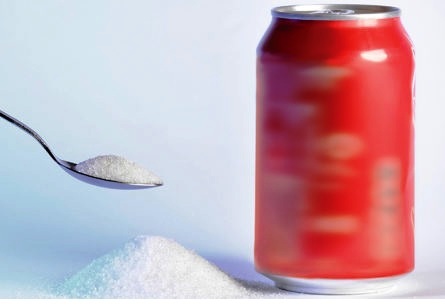Why the ‘Traffic light classification’ system? |23 February 2018
In January 2018, it was announced that a new set of guidelines had been presented to state and private school tuck shop operators as part of on-going efforts by the Ministry of Health to revise the Seychelles National School Nutrition Policy. The need for this revision comes as an attempt to curb the increasing rate of obesity/overweight cases in the country, with 1 in every 5 children (25%) being overweight in Seychelles.
The new guidelines, known as the ‘Traffic light classification’ system is due to be fully implemented as from the second school term which begins on May 14, 2018. Although positive, changes are generally hard to adapt to since they require us to break away from our comfort zones and routines. In a bid to help the public to become more accustomed, the Nutrition Unit at the Ministry of Health shares further knowledge to enable the public to better understand the needs and benefits for the implementation of such a system.
The unit explains that schools are identified as a key setting for public health strategies to lower or prevent the prevalence of overweight/obesity which lead to many diseases such as cancer, diabetes and cardiovascular diseases. The school food environment has the potential to have a large impact on children and adolescents’ food intake because they consume a substantial proportion of their total daily calories at school.
Schools cannot achieve their primary mission of education if students are not healthy and fit, so it is therefore extremely important to provide a healthy environment for children and nutrition plays an integral role in this.
There is thus an urgent need for intervention for the betterment of our children, our future generation. As part of the revision of the School Nutrition Policy, the ‘Traffic light classification’ system has been introduced for categorising foods/beverages sold at school tuck shops and consumed by children in school premises.
Traffic light classification system
The set of guidelines which was revised re-introduced the ‘High’, ‘Moderate’ and ‘Low’ nutritional value foods/beverages in the policy to the new ‘Traffic light classification’ system whereby foods/beverages are assigned colour codes (green, amber or red) based on their nutritional values.
Green category: These foods/beverages are high in nutritional value, including fibre, but low in saturated fats, added sugar and salt.
Amber category: Food/beverage items in this group provide some nutrients but their consumption must be limited as they also contain saturated fats, added sugar and salt.
Red category: These foods/beverages have low satiety and nutritional values and are high in sugar, salt and saturated fats. Thus, items in this category must not be allowed in school premises and should not be consumed by children while they are in school.

Main changes in the new classification system
Beverages
Listed below are examples of some beverages that are classified under the Red category:
- Fruit juices (100%)
- Cordials, e.g. ‘Ribena’, ‘Tang’
- Fruit drinks, e.g. ‘Cool sun’
- Flavoured water
- Soft drinks
- High energy drinks, e.g. ‘Lucozade’, ‘Energade’
The World Health Organisation (WHO) categorises the above beverages as ‘Sugar Sweetened Beverages’ (SSB) which have very low nutritional value and are energy dense. According to the WHO,increased consumption of these beverages have a direct link to overweight/obesity conditions and pose a high risk of dental caries in children.
Hence, in order to regulate their growing demand/consumption among children, these beverages are listed in the Red category. The WHO recommends a reduced intake of any kind of free sugars throughout the lifecourse.
Processed meat
Processed foods such as burgers, ham, sausages, luncheon meat, corned beef and nuggets are also categorised in the Red category, mainly because the WHO classifies these items under Group 1 Carcinogen (known to cause cancer).
Higher consumption of processed meat increases the risk of bowel and stomach cancer. These meat/meat products contain preservatives like nitrites and nitrates which damage our inner cells causing cancer and thus, their consumption should be limited.
High fatty snacks
High fatty snacks like crisps, e.g. ‘Jackers’ & ‘Pringles’ and extruded snacks, e.g. ‘Cheeseballs’ and ‘Twisties’, are classified in the Red category as they are high in saturated fats and added salt but also contain some preservatives. These foods pose a higher risk of overweight/obesity and also high blood pressure if consumed in larger portions or on a daily basis.
This group of food items also includes local, homemade, deep-fried snacks like ‘moulouk’, chili cakes and banana fritters which are energy dense and also pose an increased risk of obesity/overweight among children.
Sugary snacks
Apart from chocolates, cakes and ice cream, the Red category also includes snacks like ice-cakes, sugary cereals (e.g. ‘Frosties’, ‘Cocopops’, ‘napolitaine’ and ‘moutay’. These foods are high in sugar and are thus directly linked to an increased risk of overweight/obesity and increased occurrence of dental caries among children. Despite providing some nutrients, food items like cereal bars and ‘Corn Flakes’ are still energy dense, hence their classification in the Amber category.

Baked foods
Although baked goods like baked samoosa, fruit cakes and muffins are considered to be healthier compared to deep fried foods, they are still energy dense and contain sugar. Therefore, if consumed in large amounts, these items will increase the risk of overweight/obesity among children, leading to their categorisation under the Amber category.
Nutrition plays an integral part in our children’s overall health and it is therefore necessary that we abide by any interventions that are put in place for this purpose, for the benefit of our children and our future. The National School Nutrition Policy is one such intervention that helps to tackle the rising risk of obesity, disease conditions like diabetes, cardiovascular diseases and cancer. If our children are healthier, we will have a healthier future.




